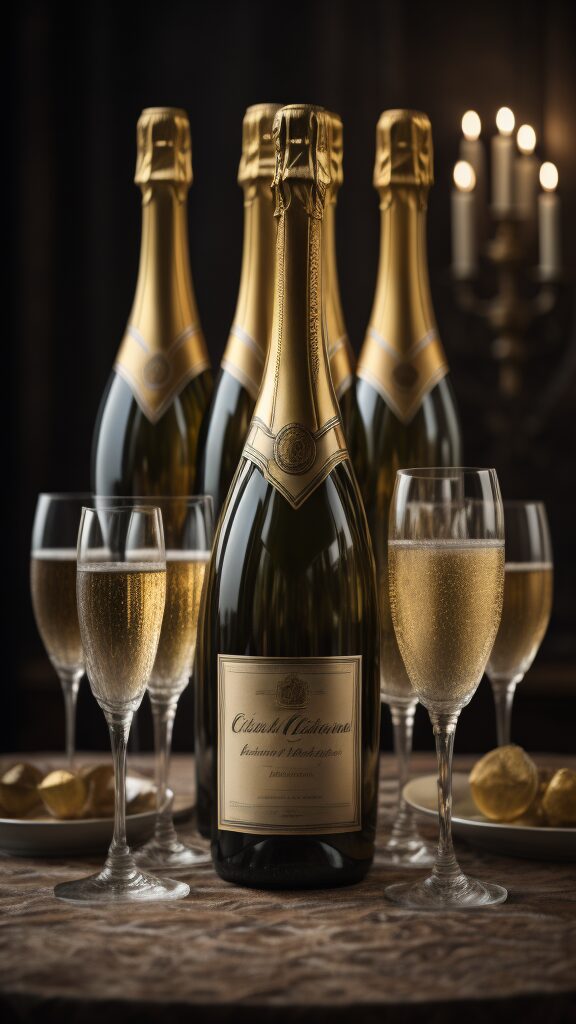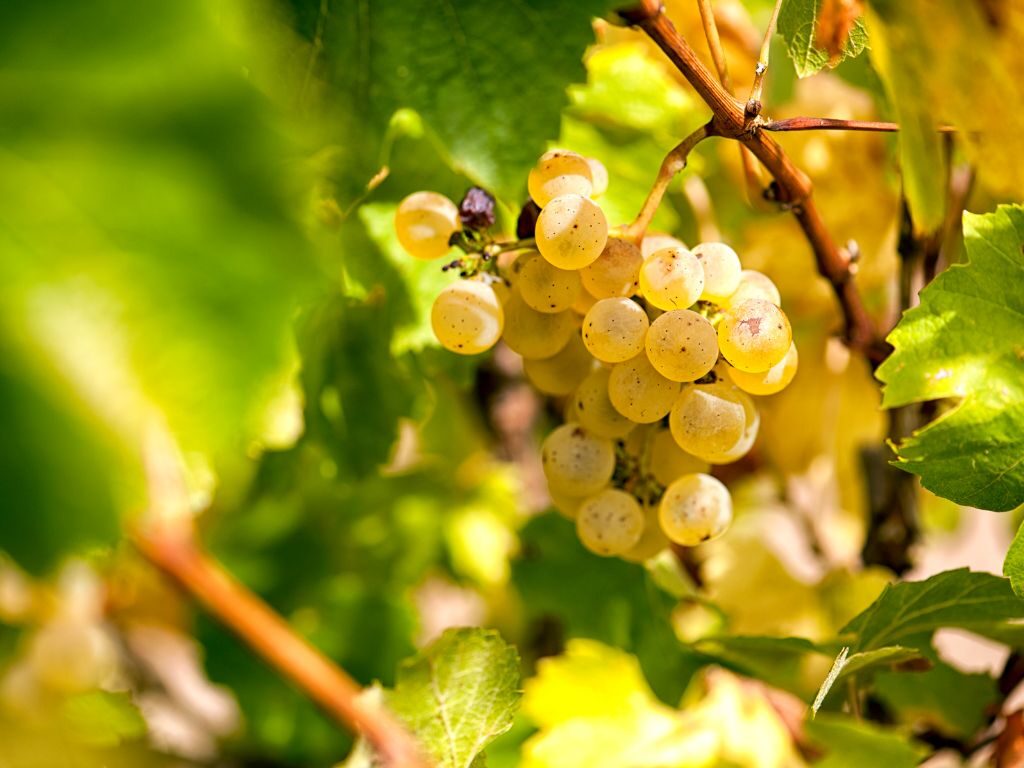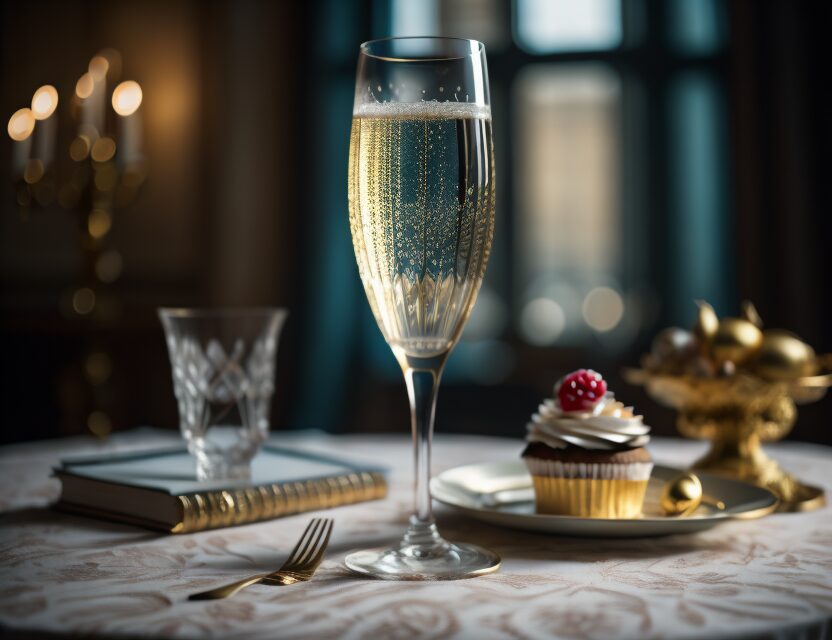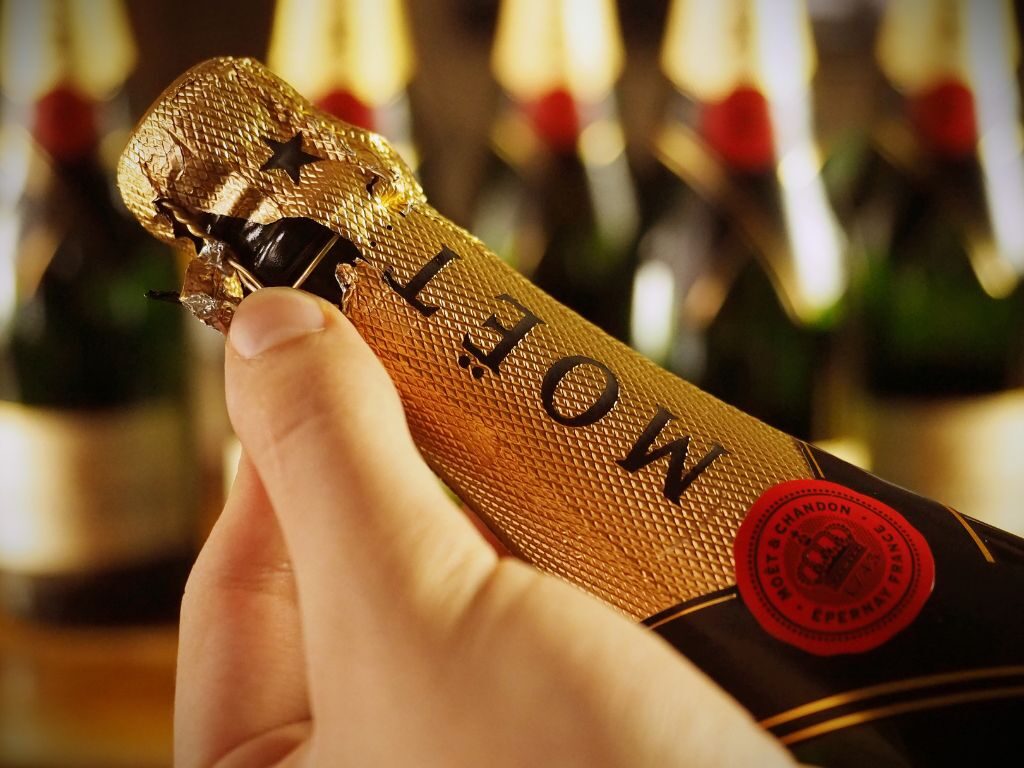
Champagne, the effervescent elixir of celebration, comes in various styles and flavors. In this bubbly exploration, we’ll pop the cork on different types of champagne, from the bone-dry Brut Nature to the lusciously sweet Demi Sec.
So, buckle up and get ready for a journey through the vineyards of champagne knowledge!
Understanding the Basics
What is Champagne?
Champagne is a type of sparkling wine produced in the Champagne region of France. The unique characteristics of this bubbly white wine are a result of specific grape varieties, production methods, and aging processes.
What is Dosage?
Dosage in the world of Champagne refers to the addition of a mixture of wine and sugar after the disgorgement process, just before the final corking.
This crucial step determines the sweetness level of the champagne, balancing its natural acidity. The amount of sugar added varies, ranging from minimal in Extra Brut to higher levels in sweeter varieties like Demi Sec.
Dosage plays a key role in shaping the taste profile, ensuring that each sip of champagne delivers a harmonious balance of flavors.
Champagne vs Sparkling Wine
Champagne and sparkling wine share a bubbly nature, but their distinctions lie in geography and production methods.
Champagne, a sparkling wine exclusively from the Champagne region of France, is crafted using a meticulous process known as the traditional method, involving a second fermentation in the bottle. This imparts a unique terroir and fine bubbles, creating the signature elegance of Champagne.
On the other hand, sparkling wine encompasses a global array of effervescent delights, produced in various regions with diverse grape varieties and methods.
While Champagne is a specific type of sparkling wine, not all sparkling wines can claim the prestigious title of Champagne, reserved for the French masterpiece.
Grape Varieties in Champagne
Chardonnay, Pinot Noir, and Pinot Meunier are the primary grape varieties used in champagne production. These grapes bring their own distinct flavors, contributing to the diverse range of champagnes available.

Exploring the Types of Champagne by Grape Variety
Blanc de Noirs: Red Elegance in a Glass
When red grapes take the spotlight, you get Blanc de Noirs. Made exclusively from black-skinned grapes – typically Pinot Noir and Pinot Meunier – this champagne boasts a rich, full-bodied flavor profile with a hint of red wine complexity.
Blanc de Blancs: A Symphony of Whites
Step into the world of elegance with Blanc de Blancs. This champagne is exclusively crafted from white grapes, typically 100% Chardonnay. It offers a bright and vibrant experience with notes of citrus, green apple, and a touch of minerality.
Read more: Blanc de Blanc Wines Complete Guide
Rosé Champagne: The Blush of Celebration
Rosé Champagne gets its captivating color from red skin contact during a brief maceration period. It can be a blend of white and red varieties, or purely red grapes.
It’s not just visually stunning; the taste is a delicate balance of red fruit flavors and the classic champagne crispness.

Champagne Types by Sweetness Level
Champagne Brut Nature: No Sugar Added
Imagine the crisp, clean taste of a champagne that’s as pure as freshly fallen snow. That’s Brut Nature for you.
It contains little to no added sugar, letting the true essence of the grapes shine through. Perfect for those who savor the authentic taste of champagne and want their wine bone dry.
Champagne Extra Brut: 0-6 Grams Added Sugar
If you lean towards the drier end of the spectrum, Extra Brut is your companion. With minimal dosage (sugar added after fermentation), this champagne lets the natural flavors take center stage, providing a crisp and refreshing experience.
Brut Champagne: Less than 12 Grams of Added Sugar
Brut champagne, the epitome of dryness in the bubbly world, boasts a crisp and refreshing taste with minimal added sugar during the dosage process.
Its effervescence delights the palate with a perfect balance, allowing the natural flavors of the grapes to shine through. This is one of hte most popular types of Champagne you’ll find on the market.
Champagne Extra Dry: 12-17 grams of sugar added
Champagne Extra Dry, despite its misleading name, actually falls on the slightly sweeter side of the spectrum due to a touch more sugar added during dosage.
This results in a sparkling wine that offers a delightful balance between the crispness of traditional brut champagne and a subtle hint of sweetness, creating a versatile and approachable sip.
Champagne Dry: 17-32 grams of sugar added
Champagne labeled as “Dry” is a bit of a misnomer in the sparkling wine world, as it is not as dry as its name implies. It contains a moderate amount of residual sugar, offering a slightly sweeter taste profile than Brut champagne, making it a charming choice for those who enjoy a touch of sweetness in their bubbly experience.
A bottle of Champagne in this style can be a great option paired with food!
Demi Sec: 33-50 grams of Sugar Added
On the sweeter side, we have Demi Sec. With a slightly higher dosage of sugar, this champagne dances on the palate with a delightful sweetness. It’s the perfect choice for those who enjoy a touch of sugary indulgence in their bubbly.
Champagne Doux: 50+ grams of sugar added
Champagne Doux, the sweetest category in the sparkling wine spectrum, envelops the palate with a pronounced sweetness due to a higher dosage of residual sugar.
This lusciously sweet champagne variety is a delightful treat, perfect for those who prefer a more indulgent and dessert-like experience in each effervescent sip.
Related: Best Champagne & Sparkling Wine (Your Complete Shopping Guide!)

Vintage Champagnes: Capturing a Year in a Bottle
Some champagnes proudly wear the badge of a specific vintage, indicating that the grapes used in its production come from a single exceptional year. These bottles offer a snapshot of the weather and grape conditions during that specific harvest.
Typically only top Champagne houses produce Vintage Champagnes, and only in the best years.
Vintage champagne typically surpasses non-vintage (NV) champagne in complexity due to its unique production process. In a vintage champagne, grapes are exclusively harvested from a single exceptional year, allowing the wine to showcase the specific characteristics of that particular harvest.
This focused expression, combined with extended aging, results in a more nuanced and complex flavor profile compared to non-vintage counterparts, which blend wines from multiple years to achieve consistency.
Decoding the Lingo
Extra Dry vs. Demi Sec: Navigating the Sugar Levels
The terms “Extra Dry” and “Demi Sec” might sound confusing, but they refer to the sweetness levels. Extra Dry is actually slightly sweeter than Brut, while Demi Sec is noticeably sweeter, making it a delightful dessert companion.
Residual Sugar Explained
Ever wondered what those numbers on the label mean? They indicate the amount of residual sugar in grams per liter. A lower number, like 5 grams, signals a drier champagne, while 50 grams or more will give you a sweet sensation.
Conclusion
As you embark on your Champagne journey, remember that the world of bubbly is as diverse as the people celebrating with it. Whether you prefer the bone-dry embrace of Brut Nature or the sweet allure of Demi Sec, there’s a Champagne type waiting to enchant your taste buds.
So, the next time you raise a glass of Champagne, let the tiny bubbles carry you away to the picturesque vineyards of France, where each sip is a celebration of artistry and tradition.
Cheers to the effervescent wonders that make life sparkle! 🥂
